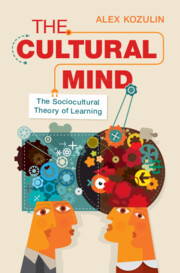3 - Leading Activity and Child Development
Published online by Cambridge University Press: 09 November 2023
Summary
Symbolic tools represent, organize, and transform our knowledge of objects and events. The acquisition and internalization of symbolic tools change the way we think about the world. Different cultural subgroups use different symbolic tools and as a result, they shape their cognitive processes, even those as basic as spatial memory, differently. Moreover, some of the psychological functions that at the first glance should progress developmentally irrespective of the person’s experience actually depend on the acquisition and mastery of specific tools, for example, the graphic representation of objects. Even in societies with formal educational systems, the teaching of symbolic tools as tools is often neglected. Tables, graphs, and formulae appear as a part of the content material instead of being learned as specific tools. Many of the problem-solving mistakes made by students, for example in international exams such as PISA and TIMMS, reflect their poor mastery of symbolic tools rather than a lack of curricular knowledge. Educational interventions aimed at teaching students how to identify and apply the instrumental properties of symbolic tools lead to improved problem-solving in subjects ranging from mathematics to foreign language learning.
Keywords
- Type
- Chapter
- Information
- The Cultural MindThe Sociocultural Theory of Learning, pp. 72 - 100Publisher: Cambridge University PressPrint publication year: 2023



